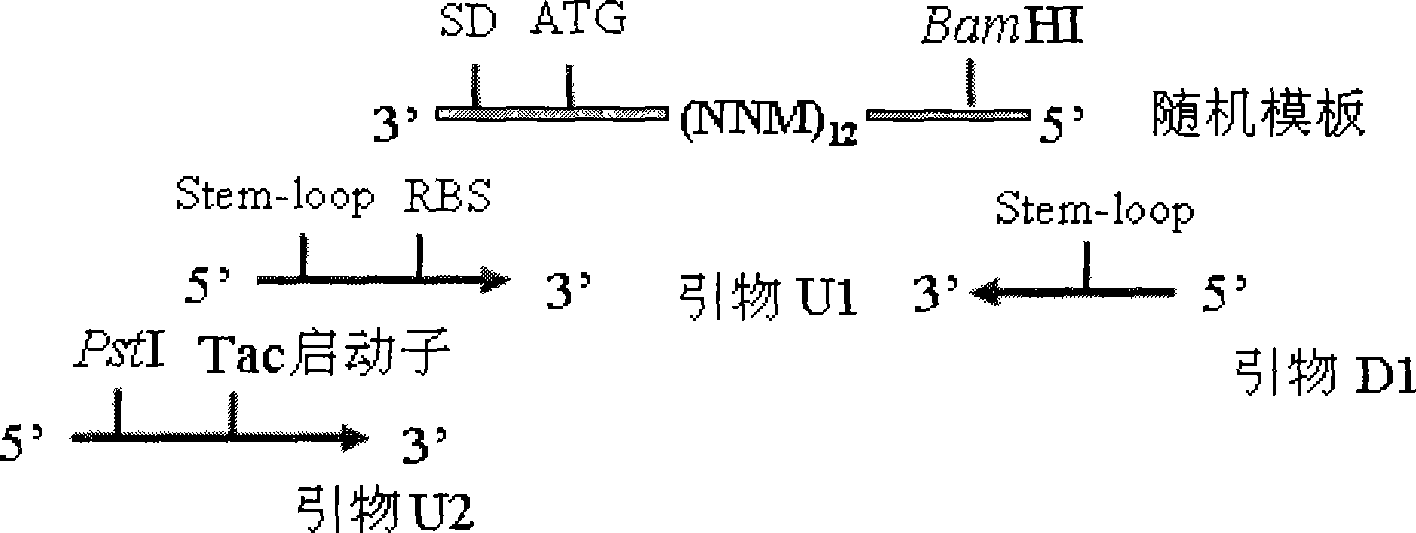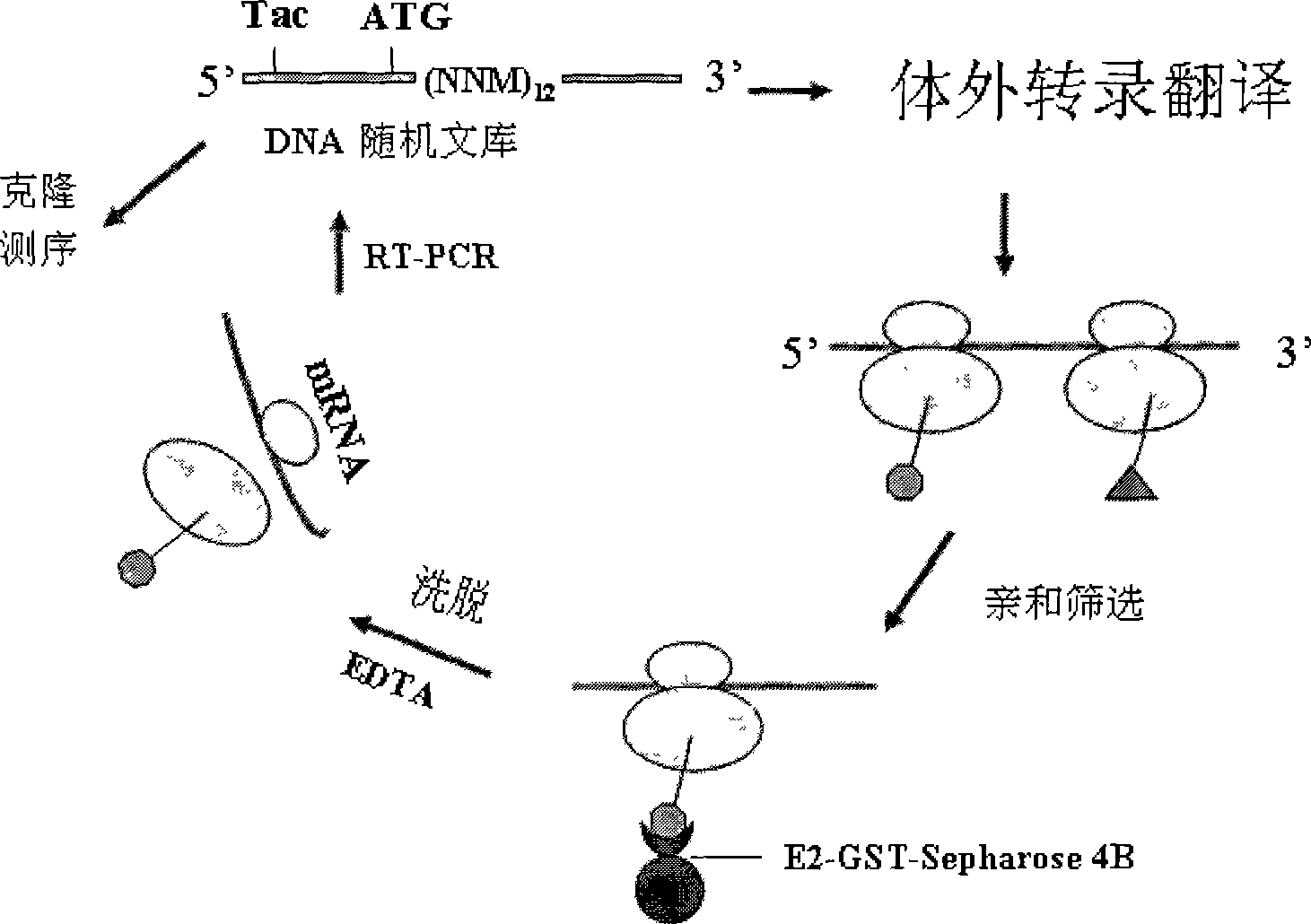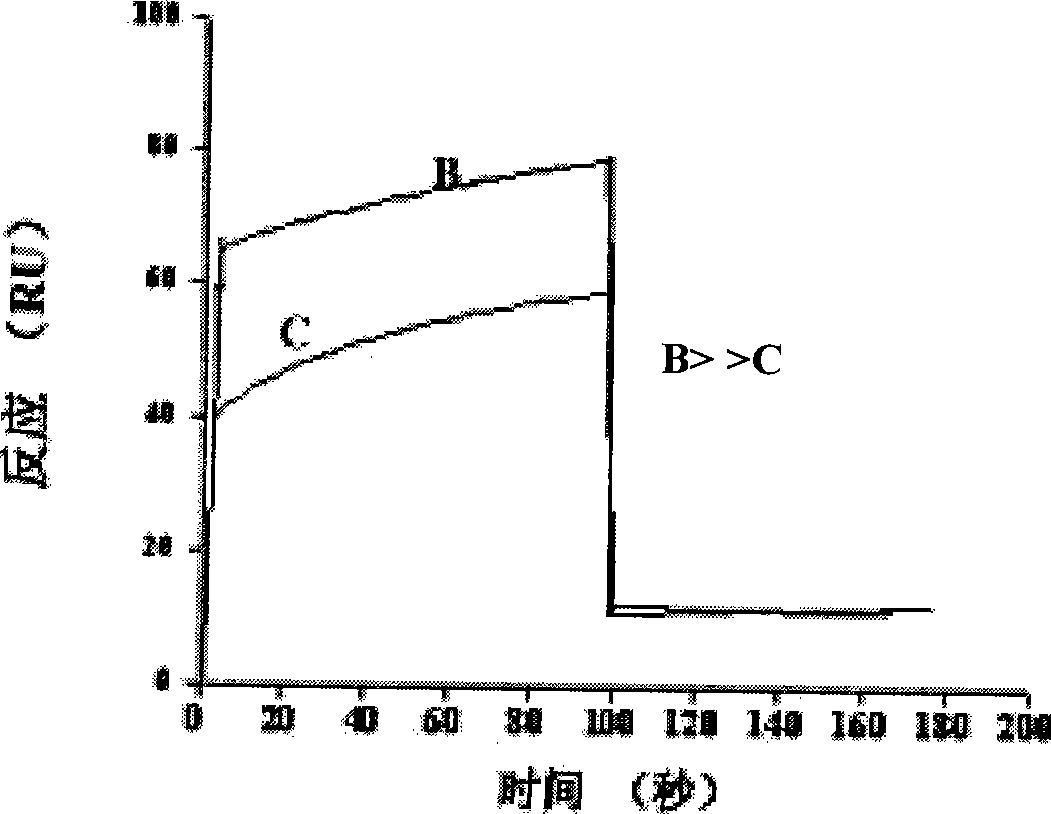12 peptide ZB for inhibiting hepatitis c virus to infect human cell and preparation method and application
A technology of E2-GST and BL21DE3, applied in antiviral agents, peptides, pharmaceutical formulations, etc., can solve the problems of individual patient differences, adverse reactions, and limited drug doses
- Summary
- Abstract
- Description
- Claims
- Application Information
AI Technical Summary
Problems solved by technology
Method used
Image
Examples
Embodiment 1
[0166] 1. The steps for preparing E2-GST fusion protein are as follows:
[0167] A. Pick Escherichia coli BL21DE3 containing pGEX-KG-E2 (purchased from U.S. Invitrogen Company) and cultivate it in 3ml of LB medium containing ampicillin (50g / ml), and control groups were inoculated with pGEX-KG (GST protein) Prokaryotic expression vector, purchased from Amersham Biosciences), cultured at 37°C for 12-16 hours.
[0168] B. Transfer the bacterial solution in the small test tube to 200ml LB liquid medium containing ampicillin (50g / ml) respectively (LB liquid medium is: 10g tryptone, 5g yeast extract, 10g sodium chloride, dissolved to 1000ml double-distilled water) at 37°C until the OD600 is 1-2.
[0169] C. Add 100 mM isopropyl-β-D-thiogalactoside (IPTG) so that the final concentration is 0.1 mM, and induce at 30° C. for 4 to 5 hours.
[0170] D. Divide the induced bacterial solution into 250ml centrifuge tubes, centrifuge at 7700g at 4°C for 5min, and discard the supernatant.
...
Embodiment 2
[0292] The steps of surface plasmon resonance (SPR) detection of affinity between polypeptide and E2 protein are as follows:
[0293] A. Let the test instrument Biocore (USA) pass through a period of HBS buffer until the baseline is stable.
[0294] B. Inject 40 μl of amino coupling reagent (containing 0.02M 1-(3-dimethylaminopropyl)-3-ethylcarbodiimide (EDC) and 0.05M N-hydroxysuccinimide (NHS) ), activate the carboxyl group on the GM5 sensor chip.
[0295] C. Dilute the E2 protein to 5 mg / ml with an acetate buffer solution with a pH value of 5.0, and inject 40 μl of the solution.
[0296] D. On-machine detection, the flow rate is 20 μl / min.
[0297] E. Dilute the polypeptides PE2A, PE2B, PE2C, and PE2D to different concentrations, and react with the E2 protein on the CM5 sensor chip at 2 μl / min for 7 minutes.
[0298] F. Inject 10 μl of HCl regeneration solution at a flow rate of 2 μl / min to restore the baseline, and collect response signals in real time.
[0299] G. Per...
Embodiment 3
[0303] The steps for flow cytometry to detect the combination of polypeptides and target molecules are as follows:
[0304] A. Culture human liver cancer cells Huh7.5 (see reference Zhong, et al., Robust hepatitis C virus infection in vitro, 2005, PNAS, 102: 9294-9299) and DC-Sign-NIH3T3 (with DC-Sign molecules on the surface Mouse fibroblast) cells (see reference Wu, et al., Functional evaluation of DC-SIGN monoclonal antibodies reveals DC-SIGNinteractions with ICAM-3 do not promote human immunodeficiency virustype I transmission.J.virol.2002, 76 :5905-5914). The culture conditions were all DMEM medium (purchased by Gibco) with 10% fetal bovine serum, cultured at 37° C. in an incubator containing 5% carbon dioxide.
[0305] B. Mix polypeptides ZB and ZC with E2-GST protein respectively (GST protein is added to the control tube), the total volume is 50 μl, wherein the concentration of polypeptide is 500 μM, and the concentration of E2-GST protein and GST protein is 20 μg / ml, ...
PUM
 Login to View More
Login to View More Abstract
Description
Claims
Application Information
 Login to View More
Login to View More - R&D
- Intellectual Property
- Life Sciences
- Materials
- Tech Scout
- Unparalleled Data Quality
- Higher Quality Content
- 60% Fewer Hallucinations
Browse by: Latest US Patents, China's latest patents, Technical Efficacy Thesaurus, Application Domain, Technology Topic, Popular Technical Reports.
© 2025 PatSnap. All rights reserved.Legal|Privacy policy|Modern Slavery Act Transparency Statement|Sitemap|About US| Contact US: help@patsnap.com



